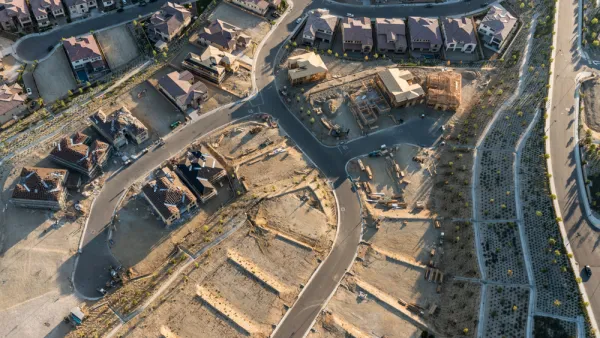The Washington city reformed its zoning code to support more multifamily development and a diversity of housing types to meet the needs of its growing population.

With their town surrounded by valuable agricultural land, officials in Walla Walla, Washington are particularly attuned to the need to rein in sprawl and encourage smart growth as the population grows. As Patrick Sisson explains in Planning Magazine, when it came time to update the city’s comprehensive plan, the city’s planners worked to reform and streamline complicated, outdated zoning codes and support more density and multifamily development.
“The answer was Neighborhood Residential (RN), a near-universal residential zoning designation that allows builders to go as dense as 75 units per acre, given that they still meet existing standards like landscaping, height, setbacks, parking, and lot coverage.” The city also updated regulations for accessory dwelling units (ADUs), eliminating owner-occupied restrictions and raising the size limit.
Sisson’s article details the changes, the process of getting them approved, and the positive reactions from many residents and builders. While Sisson admits that “So far, the numbers aren't showing a dramatic change,” due to the pandemic, there is some progress, and “developers have begun investing in new types of projects, including apartment complexes and conversions of motels into affordable housing.” According to Sisson, the city is also considering expanding a tax incentive for multifamily housing and creating a community land trust.
FULL STORY: Zoning Reform Creates New Model for Smart Growth in Walla Walla, Washington

National Parks Layoffs Will Cause Communities to Lose Billions
Thousands of essential park workers were laid off this week, just before the busy spring break season.

Retro-silient?: America’s First “Eco-burb,” The Woodlands Turns 50
A master-planned community north of Houston offers lessons on green infrastructure and resilient design, but falls short of its founder’s lofty affordability and walkability goals.

Delivering for America Plan Will Downgrade Mail Service in at Least 49.5 Percent of Zip Codes
Republican and Democrat lawmakers criticize the plan for its disproportionate negative impact on rural communities.

Test News Post 1
This is a summary

Test News Headline 46
Test for the image on the front page.

Balancing Bombs and Butterflies: How the National Guard Protects a Rare Species
The National Guard at Fort Indiantown Gap uses GIS technology and land management strategies to balance military training with conservation efforts, ensuring the survival of the rare eastern regal fritillary butterfly.
Urban Design for Planners 1: Software Tools
This six-course series explores essential urban design concepts using open source software and equips planners with the tools they need to participate fully in the urban design process.
Planning for Universal Design
Learn the tools for implementing Universal Design in planning regulations.
EMC Planning Group, Inc.
Planetizen
Planetizen
Mpact (formerly Rail~Volution)
Great Falls Development Authority, Inc.
HUDs Office of Policy Development and Research
NYU Wagner Graduate School of Public Service




























